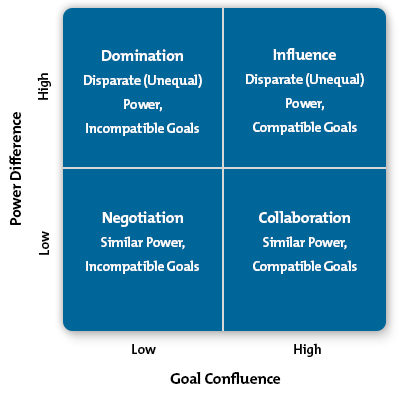Eldred's Power Strategies
Finding the Best Way to Exert Power
If you want a successful career, you need to engage with your colleagues effectively. But, sadly, such close work doesn't always come easily.
You may have to work with people who have entirely different – or conflicting – priorities, or have much more (or much less) power than you.
Perhaps someone who's several grades above you wants to guide you in a certain direction. Or perhaps there's a junior member of your team who's eager to push forward his or her own ideas.
Don't let power and status get in the way of team productivity.
John Eldred, a professor at the University of Pennsylvania, developed a model to explain how you can exert personal power in mutually beneficial ways. This article walks you through it.
The Power Strategies Model
Eldred's model presents four strategies that can help you to have an impact on other people. These strategies are shown in figure 1. The vertical axis represents the power balance between two individuals – the power balance is high where the two people are equally powerful, and low where one is weak and the other is strong.
The horizontal axis represents the extent to which people's goals conflict (low confluence) or complement one another (high confluence).

Note:
"Goal confluence" doesn't mean that both people have the exact same goal. The idea is that people's goals are moving in the same general direction. If one person reaches his or her goal, it doesn't affect the other person's ability to also reach his goal.
...
Access the Full Article
This article is only available in full within the Mind Tools Club.
Learn More and Join TodayAlready a Club member? Log in to finish this article.


